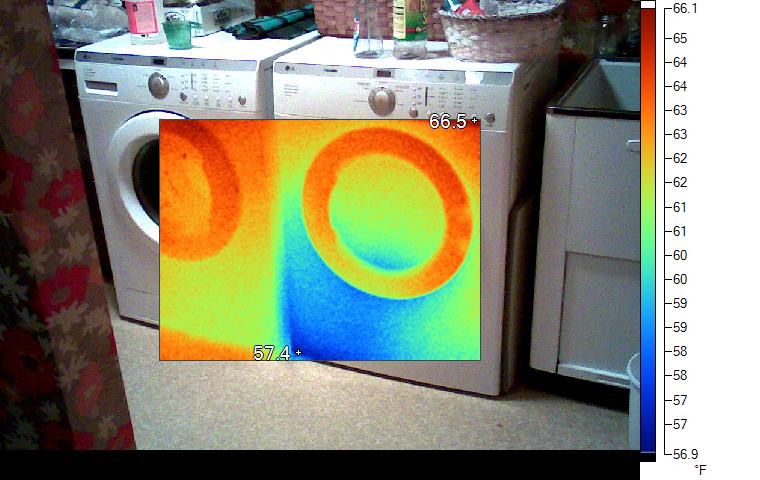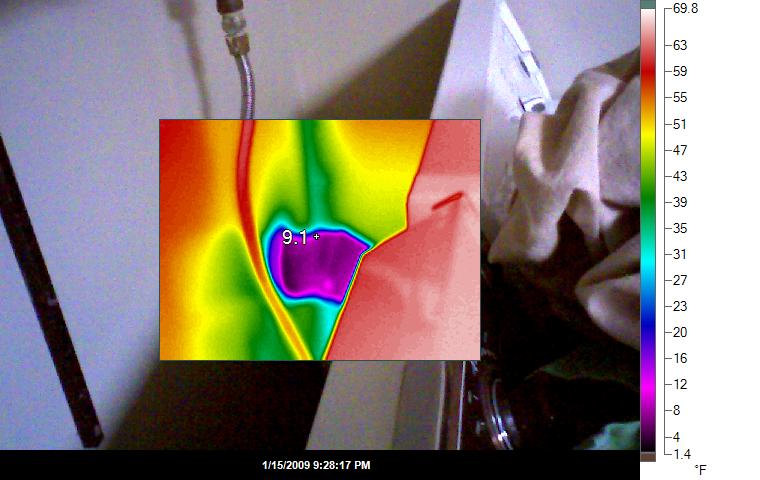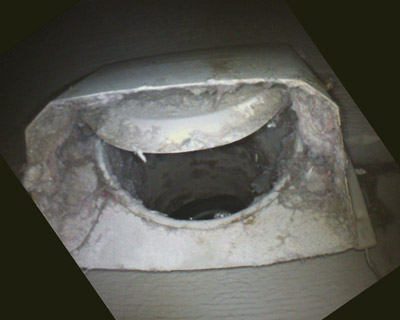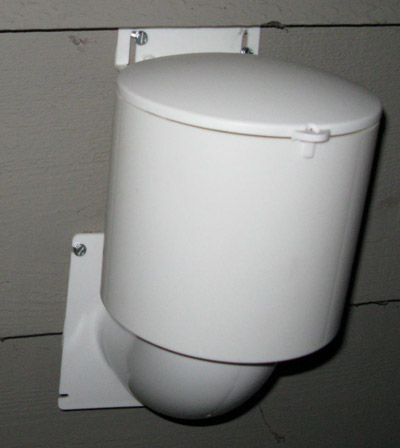- Home
- Deceptions
- Solar
- Thermal Audit
- Ventilation
- Sensors
- Governance
- Environment
- Reference
- Contact
- News
Infrared Imaging of Dryer Ducts
Laundry rooms are often quite cold because of drafts that enter through the exhaust vents. The photo below shows a washer and dryer side by side and it is clear that the dryer (the right most appliance) has a large cold spot. A large appliance like this will act as a heat sink and thoroughly chill a small laundry room. If the dryer door is left open (unlikely with this front loading dryer because there is a light inside and you have to close the door to turn it off), a large draft would have been created.

The problem in this example is a dryer vent, shown below, which allowed air to flow into the laundry room when the winds were blowing at this side of the house.

Here is another vent that can't close because a rodent screen is in the way.

The most common reason for flaps like this to jam is the accumulation of lint in the flap hinge area, which was the cause of the cold dryer below. The lower section of the dryer is 50F and was the reason this room was always cold.

The image below was taken of the dryer vent behind the appliances shown above where it exits the exterior wall. It was very cold outside, averaging -13F for the day. Wind speed averaged 7mph with gusts to 20F. The flap that caused this problem is below the following thermal image.

You have two solutions to this problem. The first is to clean the lint out of the duct and especially the vent flap. The downside is that heat rises in a house creating a small pressure differential called the stack effect that draws air into the basement and out through the upper level. Since this dryer was in a basement, it was likely that air is always trying to enter and that the flap needs a tight seal to be effective. Flaps like this never make a tight seal. Had the dryer been upstairs where the stack differential was positive, the flap would have offered little resistance to outward flows.

A vastly better solution is to replace the vent with something modern. The vent below has a cap that lifts up when the dryer is on, and falls back to cover the outlet when the dryer turns off. It is a simple one-way check valve for dryers.

Conclusion: Ensure that the flap vents close completely and seriously consider replacing all your flap style ventilation exhausts with more sophisticated designs like the one shown above.
-- end --
